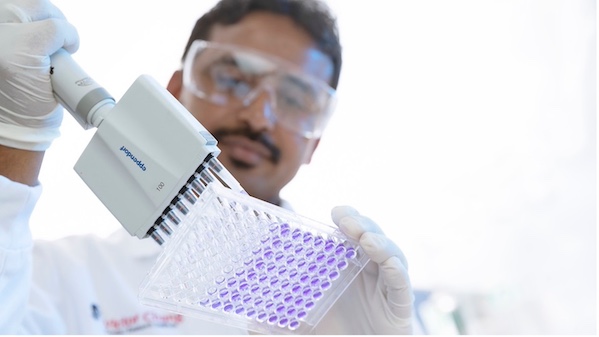First-Of-Its-Kind Integrated Heart Mapping to Prevent Damage Caused By Heart Attack
July 3, 2024
Source: drugdu
 577
577
 During and after a heart attack, the heart's muscles suffer damage leading to the formation of scar tissue known as cardiac fibrosis. This scar tissue lacks the flexibility and contractility of healthy heart muscle, and its permanent presence can impair the heart's pumping ability, potentially resulting in heart failure. Cardiac fibrosis is associated with all forms of heart disease, including those resulting from the overloading of the heart due to high blood pressure. Despite substantial investment in research seeking treatments to manage cardiac fibrosis, these efforts have largely been unsuccessful. There is a pressing need for innovative treatments that could halt or even reverse cardiac fibrosis, offering hope to millions affected. Scientists have now developed a first-of-its-kind integrated map of heart cells that sheds light on the process of cardiac fibrosis and could aid in preventing damage following a heart attack.
During and after a heart attack, the heart's muscles suffer damage leading to the formation of scar tissue known as cardiac fibrosis. This scar tissue lacks the flexibility and contractility of healthy heart muscle, and its permanent presence can impair the heart's pumping ability, potentially resulting in heart failure. Cardiac fibrosis is associated with all forms of heart disease, including those resulting from the overloading of the heart due to high blood pressure. Despite substantial investment in research seeking treatments to manage cardiac fibrosis, these efforts have largely been unsuccessful. There is a pressing need for innovative treatments that could halt or even reverse cardiac fibrosis, offering hope to millions affected. Scientists have now developed a first-of-its-kind integrated map of heart cells that sheds light on the process of cardiac fibrosis and could aid in preventing damage following a heart attack.
This breakthrough achieved by researchers at the Victor Chang Cardiac Research Institute (Darlinghurst, NSW, Australia) marks a significant advancement in understanding cardiac fibrosis and paving the way for the development of targeted medications to prevent scarring after a heart attack. The research team examined RNA signatures from one hundred thousand single cells, focusing on those implicated in fibrosis. By integrating data from various leading studies across multiple heart disease states, they were able to create a comprehensive cellular map of a mouse heart model, identifying cells and pathways involved in fibrosis. The study identified a variety of cell types including resting cells, activated cells, inflammatory populations, progenitor cells, dividing cells, and specialized cells known as myofibroblasts and matrifibrocytes. Notably, the researchers found that myofibroblasts, which are the key drivers of scarring and are not found in healthy hearts, begin to appear three days post-heart attack in mice, peaking at day five, before transitioning into matrifibrocytes, which may prevent the resolution of the scar.
The study, published in Science Advances, also examined other heart disease models that simulate heart failure induced by elevated internal blood pressures, such as those caused by aortic stenosis or hypertension. Interestingly, the progression of fibrosis showed remarkable similarities across these different heart disease conditions. Like in post-heart attack scenarios, myofibroblasts were prominently present early in the course of hypertension and later transformed into matrifibrocytes. While the study utilized data from both mouse models and human subjects, it acknowledged that in humans, heart failure can evolve over decades, necessitating further exploration to precisely define the cell types and timing of these processes in human patients. Additionally, the researchers developed the CardiacFibroAtlas, an online tool that enables global researchers to visualize and study gene behavior in heart attacks and related cardiovascular conditions.
“Fibrosis is an essential part of the body’s way of healing. But in the heart, if the disease triggers are not resolved, the process can go too far, causing scarring that is incredibly harmful to heart function and a major cause of heart failure,” said Professor Richard Harvey, who led the study. “For the first time, using revolutionary technology that enables us to analyze gene expression in single cells, we have been able to map out the progressive cell states involved in cardiac fibrosis and how these cells evolve day by day."
Source:
https://www.labmedica.com/pathology/articles/294801693/first-of-its-kind-integrated-heart-mapping-to-prevent-damage-caused-by-heart-attack.html
Read more on
- Multiple batches of quadrivalent influenza virus split vaccine have been sub-packaged and submitted for lot release approval; expected to be released to the market soon after approval December 12, 2025
- Ab&B Bio-Tech CO., LTD. JS Lyophilized Human Rabies Vaccine Initiates Phase III Clinical Trials December 12, 2025
- The ‘Sweetest’ HPV Vaccine Market is Gone | Haibin Interview December 12, 2025
- InnoCare Pharma announced that its first independently developed next-generation TRK inhibitor, zoletrazinib, has been approved for marketing in China December 12, 2025
- Is PD-1/VEGF dual antibody + ADC becoming the standard configuration? December 12, 2025
your submission has already been received.
OK
Subscribe
Please enter a valid Email address!
Submit
The most relevant industry news & insight will be sent to you every two weeks.



